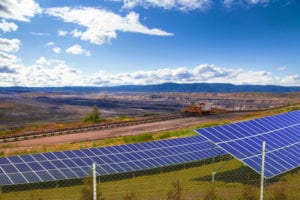The chemical industry plays a vital role in providing essential materials and products for our society. Chemical industry growth is linked to population demand – as the population grows, greenhouse gas emissions increase. In 2021, global carbon dioxide emissions from energy combustion and industrial processes increased by 6 % from the previous year, which equates to 36.3 gigatons of emissions, according to the International Energy Agency.
Chemical manufacturing used in the production of plastics, such as ethylene crackers and the associated downstream process plants, as well as ammonia and methanol plants, involve various energy-intensive processes that require large amounts of fossil fuels as a source of energy. These processes release significant greenhouse gas emissions (GHG) contributing to the industry’s carbon footprint. Steam and electricity generated from fossil fuel combustion further amplify energy-related emissions.
Fortunately, several strategies are being implemented by the chemical industry to address short- and long-term goals to reach net zero target. Over 78% of the energy used in the chemical industry is fossil-fuel based, which opens a decarbonization pathway through electrification. About 30 to 70% of the energy use in the industry can be electrified. Combined with low carbon process electricity, process electrification is a viable and significant step towards reducing the carbon dioxide emissions.
Decarbonization through electrification
When it comes to the decarbonization journey, up to 30% of net zero goals can be met by addressing low hanging fruit. Implementing variable speed drives on various pumps and compressors, pinch analysis and column targeting, replacing pneumatic systems with electric actuators, and using digital tools to monitor and optimize energy efficiencies targets are a few changes that make a big difference.
Further reduction requires a paradigm change to implement long term strategies to reach net zero goals; process electrification is a paradigm change.
Electrification addresses two major energy consumers in chemical plants: compression (such as ammonia and ethylene compressors) and process heating. Partial electrification scenarios are focused on electrification of compressors. While this is a well-known and widely practiced approach across process industries, full electrification scenarios that include electrification of fired heaters are necessary to substantially reduce the carbon footprint.
While process heating is energy intensive, the optimized heat integration in modern plants adds additional complexity pertaining to energy re-balance of the plant. For example, electrification of (ethylene) cracking furnaces will substantially reduce heat recovery arrangements in existing furnaces, which in turn will necessitate additional electrified heat sources for feed pre-heating and steam generation.
Some other major challenges and considerations include:
- Renewable or low-carbon intensity electricity, which is a perquisite, in most geographies and many of the processes, to have a meaningful reduction in GHG
- The intermittency of renewable electricity, which necessitates either some form of energy storage or a hybrid energy arrangement, i.e., both electrical and fired heat supply
- Significant amounts (in gigawatts) of clean electrical power, which are required for the full electrification of the chemical plants
- Retrofitting existing furnaces with minimal modifications, which is key to adoption
- Addressing issues in functional and electrical safety by providing a safe environment in operations and during maintenance of furnaces
Economics of electrification works differently for different processes and geographies. Hence it is critical to understand and compare alternatives, as well as us to accurately model cost, carbon footprint, ROI, and overall impact on profitability.
Decarbonizing chemical plants using Electricity 4.0
When it comes to the feasibility, economics, and optimal configuration of chemical plants, there are a few areas that can provide answers to key questions. For one, powerful digital modelling and simulation of conventional, hybrid, or all-electric scenarios can help paint the full picture of what plant decarbonization looks like. These models and simulation take various aspects of electrification into consideration, like electrical infrastructure, renewables generation, and power grid.
To meet the green electricity demands of the plants, a variety of approaches will be required, which includes grid power and privately owned power generation infrastructure. Power purchase agreements, virtual power plants, and industrial scale micro grids (that incorporate mixed renewables), battery and thermal storage, and small modular nuclear reactors, are all part of the equation.
While gigawatt-scale power needs of the electrified chemical plants can be met in a variety of ways, the plants need to be designed and fitted with technologies to adapt to the demand conditions of the power grid. Unlike the consumer demand response programs, most chemical processes are unable to scale back or shut down operations without significant economic penalties.

Here are a few ways to meet the power needs of electrified chemical plants:
- Hybrid furnaces provide flexibility by switching from full electric to partial electric, utilizing the fuel combustion (fossil or hydrogen burners) when necessary.
- Dual drive compressors provide the flexibility to be driven by an electric motor or a gas turbine.
- Battery energy storage and thermal storage are two additional elements to make electrification flexible and viable at scale.
- A comprehensive energy management system is a key component of the electrified chemical plants to bring the above-mentioned systems in harmony. It also plays a key role in the monetization of flexibility. With the help of artificial intelligence, EMS executes complex decisions that results in the optimal profit and carbon intensity, while minimizing downtime.
- Current process optimization systems will be unable to deal with the rapid changes in the power grid. A better approach employs distributed neural network and parallel computing for faster computation, resulting in an optimal decision on the heating source and fuel with a high confidence.
- Electric furnaces are expected to perform significantly better than fired heaters, higher heat flux, faster ramp up, better controllability, and reduced coking, etc. Thanks to the intelligent combination of advanced process control and machine learning, precise control and optimization strategies for electrified reactors are maturing at a rapid pace.
Electrification means more and more process loads that consume more electricity. That’s why the life cycle approach to power and process system integration is important more than ever.
The path towards electrification
Schneider Electric helps customers in every step of the electrification journey by assessing their plant assets and creating a blueprint for a progressive upgrade of the electrical infrastructure. To be a leader in innovation, companies can benefit from experts at the forefront of process electrification in electric heating and control technologies, flexibility, and energy management, as well as optimal electrical systems for electrified plants. By partnering with chemical companies, furnace manufacturers and OEMs, Schneider helps to electrify small to large heaters and rotating equipment. The asset process electrification journey starts with a small pilot and consulting services to qualify the asset for electrification. It is important to develop a short term and a long-term electrification roadmap to electrify small heaters and compressors and large heaters.

Although multiple decarbonization pathways exists for the chemical industry, Electricity 4.0 is the most efficient vector for decarbonization. While electrification of some of the key applications in chemicals industry, such as ethylene crackers, are in pilot stages, end users can begin their electrification journey by fixing the basics.
The key is to have an optimized action plan for an electrical infrastructure, electricity procurement, and workforce enablement. Our experts are ready to support customers in every stage of the process electrification journey, from planning and budgeting to implementation and achieving operational excellence. See more of our solutions for the energies and chemicals industries here.




Add a comment